What is the Keto Diet?
Keto diet is a short form of ketogenic diet. It is a low-carbohydrate and high-fat diet regime aiming to shift the body’s primary source of energy to carbohydrates so that our body can use fat for energy. This metabolic transformation is called ketosis. In the liver, the fatty acids get converted into ketones. Which the body can use as energy in lieu of glucose derived from carbs.
The Keto diet is considered a macronutrient diet, often containing 70%-75% fat, 20%-25% protein, and just 5%-10% carbohydrates. This deviation promotes a balanced intake of macronutrients. By significantly restricting carbs in your body, it automatically starts ketosis, where it starts burning fat.
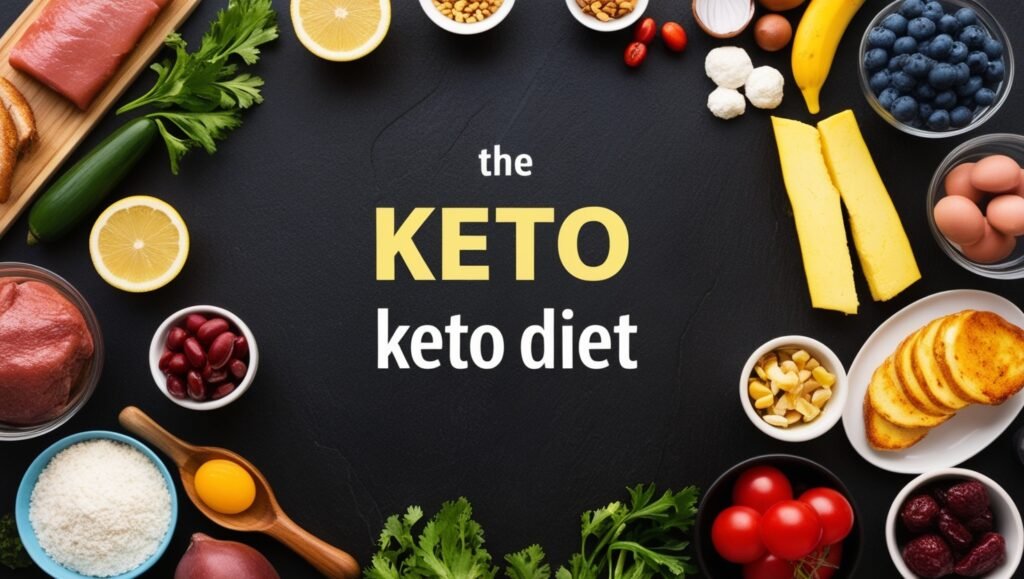
Many people who have followed the Keto diet have experienced mental clarity and improved energy levels because ketones provide a stable energy source for the brain and body. The Keto diet is not just famous for weight management but it also has many other health benefits, it improves insulin and has potential therapeutic efforts for conditions such as epilepsy and type 2 diabetes.
Benefits of the Keto Diet
Keto diet has many benefits, the first being weight loss. In this diet primary focus is on high fat and low carbs which triggers ketosis which is the body’s fat consumed for energy. Numerous studies have proven that people following the keto diet lose more weight faster and more as compared to those who do not follow keto.
In addition to assisting with weight loss, the keto diet is also very good for brain functionality and cognitive function. A study published in the journal “Neurobiology of Aging” suggested that ketones, which are formed during ketosis, provide a good source of energy to the brain. When the brain is enhanced, it will be able to concentrate more, memory will improve and apart from this your cognitive performance will also improve.
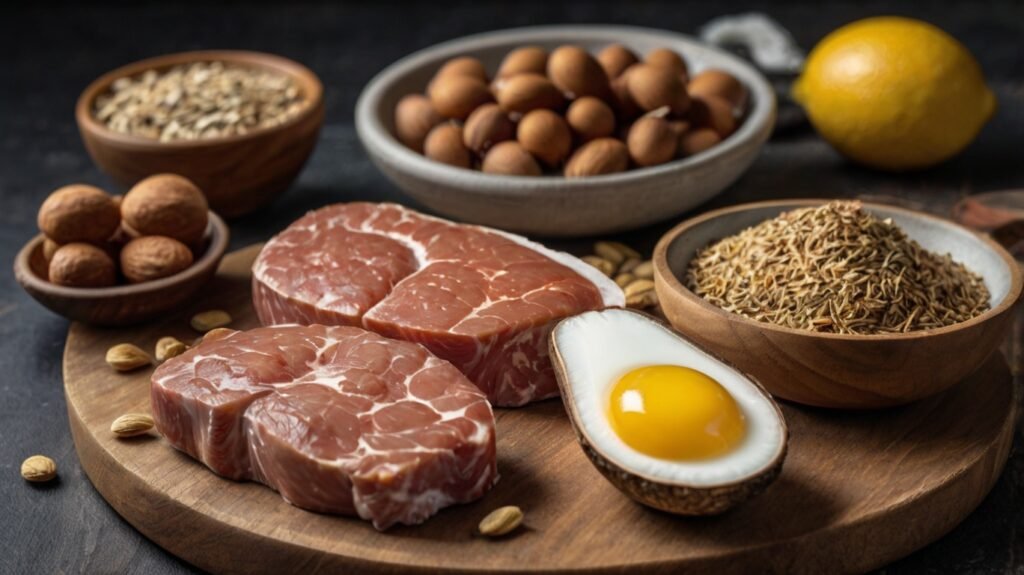
Another notable benefit of the keto diet is that it boosts energy levels considerably. Being dependent on fat as a primary energy source, it provides sustained energy throughout the day and improves your physical performance and productivity too.
Apart from this, studies also prove that this diet plan is also good for many diseases like epilepsy, it provides a non-pharmacological treatment in which the seizure frequency is reduced considerably. Also, studies show that it improves both types of diabetes by improving insulin sensitivity and regulating blood sugar levels.
At last, all these things also help us maintain a healthy lifestyle and effective management of specific health conditions
Foods to Eat on a Keto Diet
A ketogenic diet is a strict selection of food in favor low -carbohydrate and high-fat foods. The goal is to induce a state of ketosis which changes the fuel that your body metabolizes…the firm and free fats! Well at this point it does depend on whom you are talking to, but to be successful in the diet Foods need to fixate around some food group.
High-quality fats are one of the cornerstone food types on a keto diet. Good choices include, coconut oils on avocados and olive oil or butter are important as they provide the necessary fatty acids that you need while keeping carbs to a minimum. You can also consume nuts and seeds; Almonds, walnuts, chia seeds, and flaxseeds are some heavy hitters that give you good fats with minimal carbs.
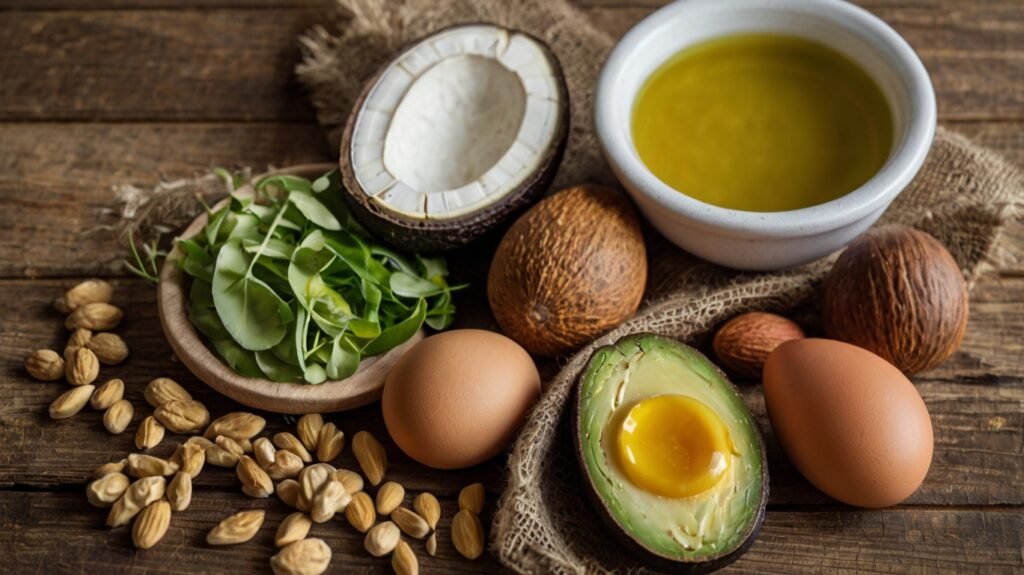
Meat and fish are also essential constituents. Particularly when talking about beef, and pork. lamb and poultry options are suggested as those meats most favorable to the carnivore diet. Fatty fish like salmon, mackerel, and sardines provide not only essential fats but are part of healthful omega-3 fatty acids too. Adding eggs to one’s diet will add a rich source of protein combined with good fat and healthy fats.
When it comes to vegetables, non-starchy is the way since starchy produce has a higher carbohydrate count. This includes leafy greens such as spinach, kale, and arugula; and cruciferous vegetables like broccoli and cauliflower. On the other side are fresh, non-starchy vegetables like leafy greens and broccoli which provide essential vitamins and minerals for good health on a keto diet.
Dairy (in moderation; cheese, cream, and Greek yogurt are good to add fat) But it is important to choose low-sugar varieties. By focusing on these types of foods, people can keep up with their ketogenic diet which goes a long way to help them in both weight loss and health improvements.
Foods to Avoid on a Keto Diet
For starters, going keto means becoming meticulous about what you eat to keep your body in a state of ketosis — the metabolic stop on top of our list that allows fat to comprise your primary fuel rather than carbs. One of the key things about this diet is to abstain from specific foods that take you off ketosis tracking. These are things like sugary foods, grains, and high-carb fruits or starchy vegetables.
Sugar• Firstly, sugary foods are an enormous contributor to carbohydrate consumption that can quickly offset ketosis. Included in this category are obviously the candy and pastries as well as things that may be a little less obvious like regular soda, certain sauces, or even some yogurts with added sugars. And to get the necessary metabolic state, these foods must be eliminated.
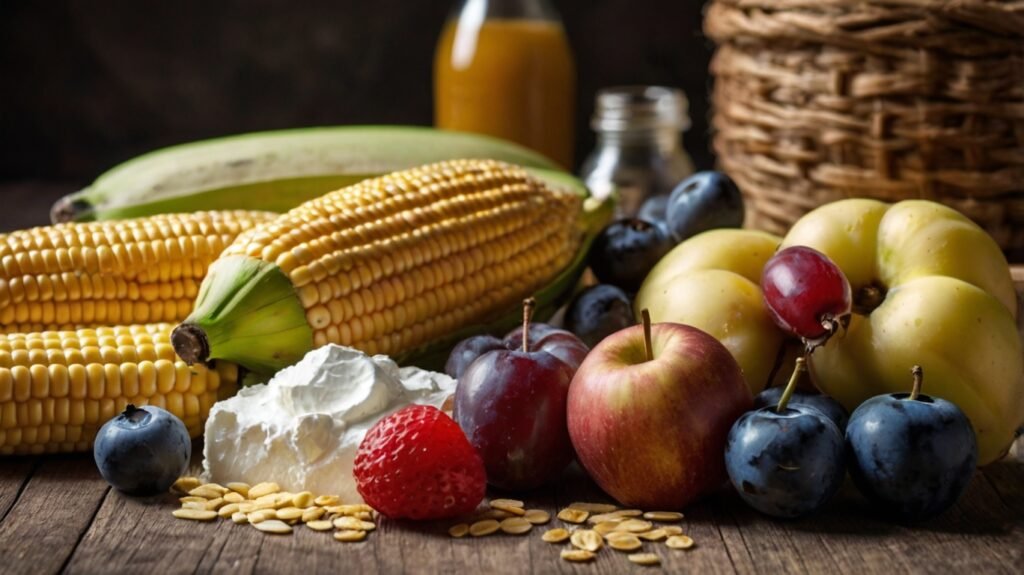
Do not consume grains Examples are wheat, rice, oats, and corn. Because they are so carb-heavy, these foods can even raise blood sugar levels; a spike like that gets in the way of one´s move into ketosis. Fortunately, you can sub in some low-carb options (like these almond flour banana muffins) and stay within your keto categories by opting for healthier choices such as coconut or almond flour.
Almost all starchy fruits, such as bananas, grapes, or apples are also problematic high-carb and must be perfectly portioned for those on a regular keto diet. Instead, those following a keto diet can choose berries or other fruits lower in carbs that they eat occasionally without causing them to exceed their carbohydrate intake for the day. In addition, starchy vegetables such as potatoes, sweet potatoes, and corn are commonly high in carbs that discourage keto objectives.
By strategically eliminating these items, the keto diet can become more easily followed by subjects hoping to lose weight or improve their overall health.
How to Get Started with the Keto Diet
Starting the journey on a keto diet healing is something that involves careful planning and preparation to achieve great results. First, it is important to know the composition of a ketogenic diet in that it includes higher fats with moderate protein and limited carbohydrates. This balance of macronutrient ratios is important because ketosis causes the body to burn fat as fuel instead of carbohydrates.
Planning your meals is one of those first steps. Big batches and snacks: Prepare meals in advance for the week or make big pots of stew that you can take to university all eaten day through. In addition, eat plenty of keto-friendly foods such as avocados, nuts, and seeds for healthy fats; low-carb veggies to get many vitamins & minerals, and fatty fish or grass-fed meat for omega-3s. Reading — 10 Healthy but Fatty Foods you have heard about! Meal planning using a master list will make grocery shopping easy and ensure that your pantry is prepared with key ingredient options.

Wrapping your head around macro tracking is another integral part of getting started on a ketogenic diet. Tracking your diet and monitoring macronutrient ratios can be done through the use of mobile applications or utilizing a written log. It not only allows you to identify easily what foods work best with your body, it also guarantees that those ketogenic principles are being adhered to. As with any lifestyle diet, the keto framework provides optimal health benefits when you prioritize whole, minimally processed foods.
While adjusting to the keto diet at first, most people (including me) have what is generally referred to as ‘the keto flu’. Usually lasts 5 to 7 days, the detox week includes fatigue, irritability, and headaches which all feel very like having flu. To offset these potential side effects, you need to drink plenty of water and pump in sufficient electrolytes (sodium) as well — keep carbohydrates low for at least the initial two weeks until your body adjusts. If you follow these steps you will set yourself up for a nice Go live.
Common Mistakes to Avoid on the Keto Diet
The keto diet, short for ketogenic, is a low-carb, high-fat eating plan that has been trending in the weight loss and health industry. That said, certain problems seem to plague almost everyone taking this journey through their diet. Know these errors to get the full benefits of a ketogenic lifestyle.
One common mistake is not tracking your macro intake properly. Successfully entering and remaining in ketosis requires sticking to proper macronutrient ratios, which usually look like 70-75% fat, 20-25% protein, and only about 5 — 10 % carbs for the ketogenic diet. If these ratios are not monitored, it is common to consume extra carbohydrates that can stall your results and end up putting glucose back into the bloodstream.

Not eating enough protein. While the keto diet focuses on fat, protein is still important for maintaining muscle mass (1), especially in periods of weight loss. If your protein intake is too low then you can start losing muscle and your metabolic rate may decrease as well. The intake of those nutrients is just enough to balance out the diet for health and wellness.
You often forget to hydrate and take electrolytes on the keto diet. The body releases water and electrolytes as it enters ketosis which typically results in dehydration (where you lose too much fluid) or imbalances. By drinking plenty of water and ensuring you replenish electrolytes like sodium, potassium, and magnesium can massively reduce these problems and help your energy levels.
The last item to consider is that most people are operating under ignorance surrounding the basics of low-carb diets, not knowing which fats are healthy vs. unhealthy for example if they do know it helps quite a bit.) It is of utmost importance to eat good quality, nutrient-dense food fats otherwise the entire purpose and health benefits that it results in will go down the drain. Being aware of these pitfalls can help people more easily navigate the difficulties that come with starting and sustaining a ketogenic lifestyle.
Intermittent Fasting and the Keto Diet
Intermittent fasting (IF) and the ketogenic, or keto diet are two of these popular diets garnering real attention in hopes of not only lose some weight but also experiencing other health benefits. The goal of both options is to optimize flexibility in metabolic function, improve fat loss, and create an appropriate backdrop for overall health outcomes which explains why they are harmonious strategies towards the achievement of weight success along with good wellness.
Ketogenic-Induced Ketosis: This is the concept behind many of these “keto” diets — the diet induces a state of ketosis, which means that your body switches to burning fat for energy. In this way, the metabolism state causes your body to burn fat in a very uninterruptible fashion? which is why overweight people often remain without constant carbohydrate absorption and steady energy rates. It will also be further amplified when combined with intermittent fasting, which is a style of eating that focuses more on the times you eat and don’t eat rather than what type of food to limit or exclude. That is because fasting can help dequantity glycogen stores a lot sooner so the physique transforms to ketosis faster in purchase to further increase excess fat oxidation.
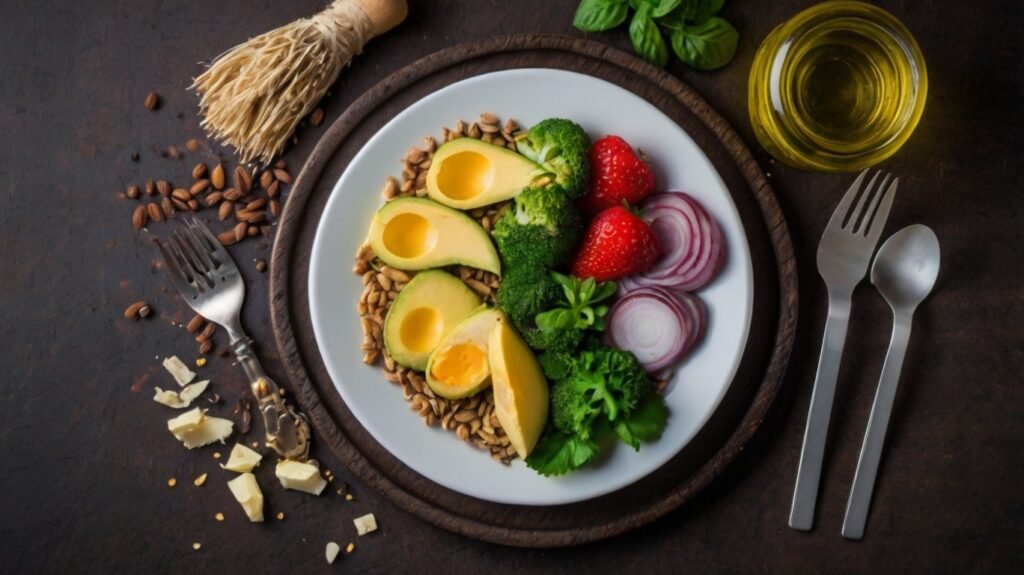
In addition, pairing intermittent fasting with a keto diet can enhance insulin sensitivity — and improved insulin function is the foundation of metabolic health. In theory, by subjecting the body to periodic fasting states in which it can no longer rely on high blood sugar levels for energy production, insulin sensitivity will be improved and reduce the risk of developing type 2 diabetes. On the other hand, improved appetite regulation has also been linked to both strategies via the production of various satiety-promoting hormones.
Moreover, both of these dietary routines could potentially provide some cognitive benefits when combined. I.F. and the ketogenic diet both help with brain health by boosting neuroplasticity (they aid in rebuilding productive neural connections) while reducing inflammation, giving you a mix of clearer cognition as well as better mood stability.
In a nutshell, combining IF with the keto diet is an incredibly powerful approach for those seeking to increase fat loss, better metabolic flexibility, and generally improve health. Understanding how these behaviors combine to affect individuals can help you better choose your eating habits.
Keto Diet Meal Plans and Recipes
Eating keto might be rewarding and provide a nutritious route to take for those who have the benefit of well-structured meal plans and easy-to-cook tasty recipes. A Ketogenic Meal Plan – This is high fat, moderate protein, and very low carbohydrate intake so that the body is forced into a ketosis state. You can still eat delicious foods while following keto diet plans, by eating different varieties of food within the limits.
One way to help bridge that gap, especially for those new on the keto wagon is starting with a weekly meal plan. An example schedule could be scrambled egg made in butter with spinach for breakfast, a chicken Caesar salad without croutons for lunch, and zoodles (zucchini noodles) tossed through pesto with grilled prawns at dinner. Nuts, cheese, or avocado for snacks. On top of that, meal prep at the beginning of each week can drastically improve convenience making diet compliant with little interruption.

A monthly meal plan, like the weekly one above but longer term to help you get into good habits and not neglect specific nutrients. Various weeks might market lean beef, fish, or chicken — along with a variety of low-carb veggies to ensure adequate nutrient consumption. Moreover, making a use of aimful keto recipes helps in increasing enjoyment and flames the chances for boredom. There are also recipes such as cauliflower fried rice, keto chili, and pork belly bites that can keep meals interesting while providing for a satisfying meal.
In the end, it is so important to have a stash of old-school keto recipes. If you need ideas, there are plenty of online resources and cookbooks devoted to keto cooking. Continue your keto journey and meal plan by preparing meals in advance with these delicious recipes.

Hello there, just became alert to your blog through Google, and found that it is truly informative. I am gonna watch out for brussels. I will appreciate if you continue this in future. Lots of people will be benefited from your writing. Cheers!
Thank you Zoritoler Imol.
Thanks , I have just been looking for information about this subject for a while and yours is the best I have found out so far. However, what concerning the bottom line? Are you certain about the source?
Thank you very much for your valuable feedback. You can check more articles too.
Your writing captures the essence of the subject in a compelling way.
Youre so cool! I dont suppose Ive learn anything like this before. So nice to seek out any person with some authentic ideas on this subject. realy thank you for starting this up. this web site is one thing that is wanted on the net, someone with a bit originality. helpful job for bringing something new to the web!
Good blog! I really love how it is easy on my eyes and the data are well written. I’m wondering how I could be notified when a new post has been made. I have subscribed to your RSS which must do the trick! Have a great day!